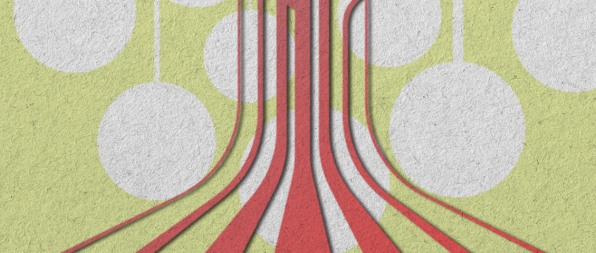From Cardiff To Cuba: A Global Search For The Best “Cultures Of Health”
Every Sunday in Bogota, Colombia, the streets close to cars and the community comes out to play. Between the hours of 7 a.m. and 2 p.m., 70 miles of roads become genuine public space, and up to 2 million people (a quarter of the city’s population) cycle, run, walk, take aerobics, play bike polo, dance, or just hang out. The “Ciclovia” is a Bogota institution dating back to the 1970s, and it’s been widely emulated elsewhere. Hundreds of cities, including about 120 in the U.S., have some version–though rarely on the same scale and with the same weekly frequency.
To the Robert Wood Johnson Foundation (RWJF), the U.S.’s largest foundation devoted to health, the Ciclovia is a good example of what it calls a “culture of health.” It’s a community intervention that promotes well-being outside the formal health system, and it has the effect of flattening the normal differences between people. The Ciclovia sees old and young, rich and poor, black and white, mix together in ways that don’t happen at other times, or in other places. “There’s a utilization of public space where people meet as relative equals, and that’s very different from other settings in society,” says Karabi Acharya, who leads the foundation’s program to identify culture of health models around the world.
When we think of health, we tend to think of hospitals, doctors, and insurance (or lack of it). RWJF is keen to expand the notion to something more encompassing and holistic. It argues that our health is determined by hundreds of disparate factors and that, to improve it, we need to open up the conversation. It’s not just a question of expanding medical access or making healthcare cheaper. It’s also how, as communities, we improve health together–how we make health a communal transaction as well as a personal and business transaction. Populations are well or sick, it argues, for dozens of reasons that fall under an umbrella of common responsibility, including the types of food available locally, whether there’s green space for exercise, if streets are cleaned, crime levels, street design, road safety, poverty, inequality, political coordination, and so on and so on.
This is a relatively new idea even for RWJF, which has been investing in America’s public health since 1972 (it makes grants of about $400 million a year). It’s only since 2014 that it’s given its more cultural initiatives equivalence to other, more formal work. “Suddenly, we went from a foundation that had a large focus on the healthcare system to one that now recognizes that the built environment, food systems, and many other social determinants have a huge impact on health,” Acharya says. “We now look at all aspects of society that contribute to health and well-being, and we work with a greater range of partners.”
As part of its “global ideas for U.S. solutions” program, which has now been running for about two years, the foundation has vetted and funded a variety of fascinating projects from around the world. Individually or as a group, they could serve as models for how to create a more robust culture of health in the United States.

The Cardiff Model
The Cardiff Violence Prevention Model (the Cardiff Model) was developed in Wales starting in 1997 to deal with a scourge of drinking-related violence. It combines data from police reports with data from emergency rooms, so cities have a fuller picture of a violent incidents and can match resources to where trouble spots occur. The program has been credited with reducing admissions to Cardiff hospitals by at least 40%, compared to cities without the program.
Following the initiative, pubs opened up space so drinkers weren’t crushed together, and therefore more likely to fight. They started using plastic containers for beer at closing time, avoiding handing out glasses that could became weapons in after-hour fights (the U.K. still sees thousands of attacks with beer glasses each year). Streets were pedestrianized. The police changed their routes, switching resources from peaceful suburbs to city centers. Nightclub managers were confronted with pictures of hospital patients, so they could understand the need to protect their clientele.
“It’s based on the realization that cities make most of their violence planning decisions based on official police data. However, most of the violence that happens in communities is not ultimately reported to police,” says Steven Sumner, medical epidemiologist in the division of violence prevention, at the Centers for Disease Control and Prevention (CDC), in an interview. The U.S. Department of Justice estimates that more than half of violent crime (53%) goes unreported to law enforcement across the U.S. as a whole.
With a grant from RWJF, the CDC Foundation (an arm of the Centers for Disease Control and Prevention) is sponsoring a pilot of the model in DeKalb County, Georgia. The idea is to create maps of violent incidents, including fights, muggings, and assaults, using data from Grady Memorial Hospital and the DeKalb County Police Department. The maps show the location and timing of local incidents, so the police department can match resources to problems, and the community can consider additional interventions together. Possibilities include: neighborhood beautification, programs aimed at troubled youth, and improving security for local businesses. “One of the great things about the Cardiff model is that it helps cities break down the silos and work in a collaborative way to solve violence,” Sumner says.
Sumner says the Cardiff Model is cost-effective because most of the investment is in changes of practice, rather than technology or hardware. But officials from different organizations do need to work together, and hospitals need to ask more questions about incidents when victims come in for treatment. In Cardiff, that means questions about the street involved, the bar or nightclub, the weapon used (fist, foot, glass, knife, or whatever it is), the number of assailants, and whether the incidents was reported to police.
“It can be implemented for little or no cost and so there are few barriers to cities testing out this model,” Sumner says. Milwaukee, Atlanta, and Philadelphia have run separate trials, and the CDC plans this fall to release guidance to other cities that want to try the idea out.

AgeWell
AgeWell Global, based in Washington, D.C., is pioneering a model of elder-to-elder peer care. It hires adults 55 years-plus to help look after other older adults, who are somewhat more frail. Agewellers–as the part-time community health workers are known–visit their peer mates at home, offering friendship and support, and gathering basic health information, which they enter into a mobile app. The app has an algorithm that crunches the data and triggers automatic doctor referrals, if the condition warrants it.
AgeWell aims to be an early warning system of potential health problems before they become full-blown health problems. By keeping tabs of elders at home, it hopes to cut expensive hospital or emergency room visits. At the same time, it also provides employment for Agewellers, who are retired, or semi-retired, and may themselves feel the need for more social interaction.
“It’s a win-win-win because we’re hiring older people to do this, because our clients are healthier for longer periods of time, and because the medical system can reduce costs,” says Jack Downey, managing director of the startup, in an interview.
RWJF is planning to sponsor a pilot of the program and other trials are already underway in New York City (on the Lower East Side) and in Cleveland.
Downey says clients are more likely to open up about their problems to their peers than their own families. “Would you tell your son or daughter what you’re issues are. Maybe. But it’s more likely you’ll tell your peer with whom you have a relationship. We find that they open up a bit more,” he says.
AgeWell, one of several “elder concierge” startups, grew out of a program in South Africa called mothers2mothers. Founded by a Mitch Besser, an obstetrician and gynecologist, M2M employs HIV-positive mothers to counsel pregnant women about not passing on the virus to their children (either during pregnancy, childbirth, or breastfeeding). It now serves about 20% of the world’s HIV-positive mothers with its peer model.
“Mitch’s dad got sepsis, and he felt bad that no one was checking in on him when a $5 antibiotic would have stopped him from going to hospital,” Downey says. “He wondered if the same peer companionship model could be used with the elderly population of the United States where many people don’t get the right attention that they need to make sure they are healthy and well.”
Adds Downey: “We think this peer-to-peer model will prove effective in the long run if we can reduce the incident rate of people going to hospital and we can delay the onset of more serious diseases and reduce the overall cost of the health system.”

Learning From Developing Countries
Acharya is broad-minded about where she looks for models that might work in the U.S. That includes looking to developing world countries that traditionally have been overlooked by the U.S. system. “It’s difficult for a lot of Americans to think that any part of the United States is similar to a [Mumbai] or Nairobi slum,” she says. “But if we, for a moment, have something in common with those folks, and they are doing things to address to their situations with far less resources than we have, then we should pay attention. We can actually learn from them.”
RWJF funds Slum Dwellers International (SDI), a South-South group of organizations representing informal settlements inhabitants. It helps slum dwellers map their land, secure land tenure, improve economic opportunities, put in infrastructure, and boost environmental health, according to Jason Corburn, a professor of city planning at UC Berkeley who works with SDI in Nairobi, Kenya.
“These are community development organizations that are addressing core factors of well-being. They don’t consider themselves health workers but they are doing prevention work in public health upstream,” Corburn says.
Now Corburn is helping bring SDI’s community-building approaches, developed in those settlements, to Richmond and East Oakland, California. “What all our work recognizes is that you can’t treat people in a healthcare center and then send them back into the communities that are making them unhealthy in the first place,” says Corburn.
RWJF also provided funding U.S. doctors, public health leaders, and policymakers to travel to Cuba, which has a strong emphasis on health prevention (prevention being cheaper than treatment). The Cubans invest in curbing conditions from escalating to the stage where they become a burden to the formal health system. For example, it runs very local community clinics (like, in fire stations) that bring basic healthcare closer to citizens. And it employs health workers to make regular home checkup visits.
“They saw that access to healthcare is so much easier because you have a doctor and nurse in every neighborhood, so people make more frequent visits [for checkups], rather than having to go to a place that’s two bus rides away in the suburbs,” Acharya says.
The learning exchange was organized by MEDICC, a nonprofit in Oakland, California, which is now helping four underserved communities develop programs based on what the leaders learned. For example, in South Los Angeles, nonprofits are now prescribing physical activity to people suffering, or at risk from, diabetes, high-blood pressures, and other lifestyle diseases, with the aim of better managing their conditions. In Albuquerque, New Mexico, a community health center has piloted a weekly community walking group for diabetes patients. And a hospital in the Bronx, in New York City, is testing a Cuban practice of keeping medical records by families, instead of by individuals. That way, Acharya says, they can develop “a more holistic understanding of an individual’s situation,” including family histories and conditions at home that may exacerbate someone’s problems.

Ciclovias In Every City
Gil Penalosa, who, as parks commissioner in Bogota helped develop the Ciclovia, now works to spread to the idea to other cities. His 8 80 Cities nonprofit–which gets its name from the idea that cities should be places for both 8-year-olds and 80-year-olds–offers a tool kit that helps cities set up car-free days.
Alyssa Bird, an associate with 8 80 Cities, says although many U.S. cities like Los Angeles, Portland, and Atlanta, have opened streets on weekends, they’re not yet having the health benefits of Bogota’s program. In most cities, the open days occur only a few times during a summer; they change location; and they’re not necessarily geared toward exercise.
“There’s certainly a culture of recreation on Sundays, but it’s not oriented around health and physical activity, which was the key driver in the Ciclovia concept,” she tells Fast Company. U.S. events tend to be more business-oriented (with stalls set up along a route) and more directed. People are more likely to exercise at organized points along the routes, rather than along the fullness of the open street area.
“The main goal with our Robert Wood Johnson Foundation funding is get people to look at these programs as a health promotion tool,” she says. “The hope is that people see it as a way they can come out every Sunday and be physically active without having to spend money on expensive gym memberships or equipment. You should be able to just walk out and get some physical activity.”
Above all, Acharya emphasizes that we can learn a great deal by studying how other countries and cities create cultures of health, even if the lesson isn’t direct and literal. She recently took a learning tour to Copenhagen, where she and hundreds of people were jumping into the harbor, even though the water was very cold. She wondered how the experience be adapted in the U.S., where jumping into freezing water is generally less common.
“You think, could that happen in the Hudson River or Baltimore Harbor?” she says. “It’s not that we’re saying we need to get people jumping into the water everywhere, but it does open your mind. You think, how could we use this harbor or this waterpark? This is about using all aspects of an environment and society to improve health and well-being.”
Fast Company , Read Full Story
(47)











